‘Mossad behind attack on Iran’s Natanz nuclear facility’
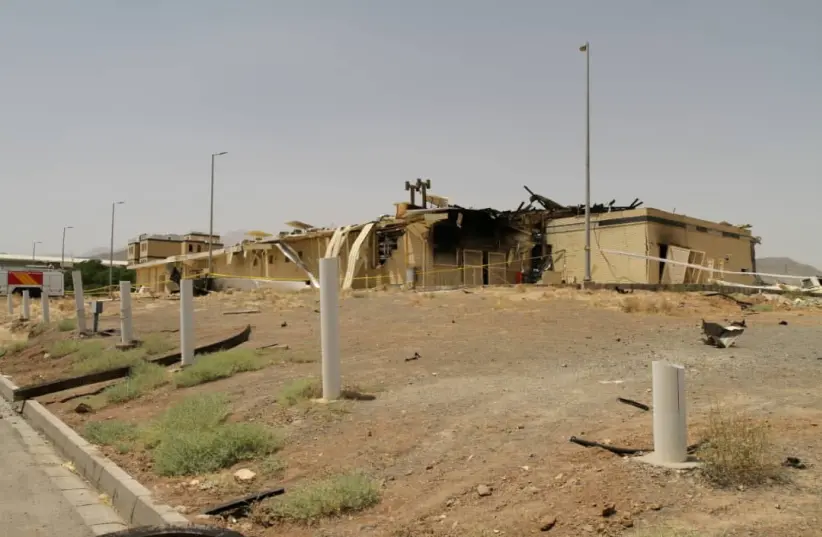
Security cabinet set to meet next week amid growing tensions between Israel and Iran.
The Mossad was reportedly behind the attack at Natanz on Sunday that caused extensive damage to Iran’s main uranium enrichment facility.
Iran’s Zarif blames Israel for Natanz attack, vows revenge
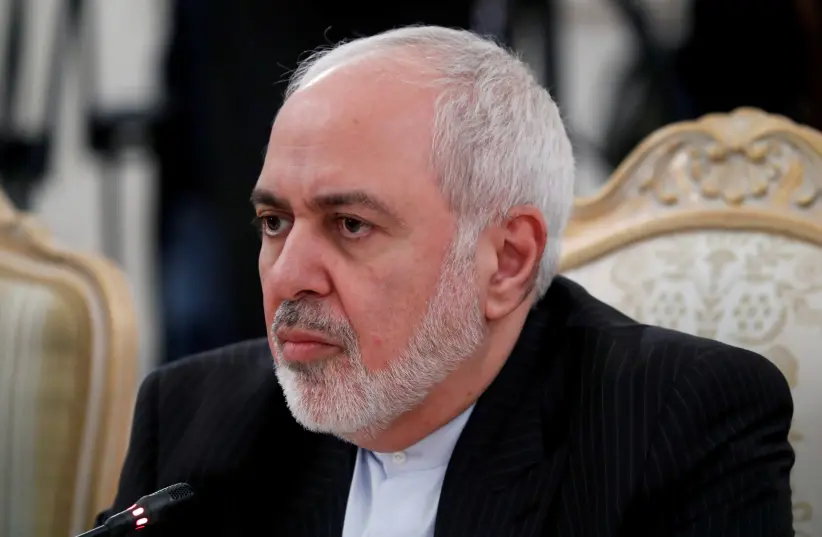
The foreign minister’s comments on Monday morning appear to be building to a crescendo that could indicate Iran intends to retaliate.
Iranian Foreign Minister Javad Zarif on Monday blamed Israel for Sunday’s incident at the Natanz nuclear facility.
An increasing number of Iranian officials have described the incident as sabotage or terrorism.
Israeli explosion sets back Natanz enrichment facility by 9 months – NYT

While Israeli media initially reported the incident was caused by a cyberattack, more recent reports say an explosive device was used.
Explosives were used to completely destroy the internal power system at Iran’s Natanz uranium enrichment facility in an alleged Israel operation, two intelligence officials told The New York Times on Sunday night.
The explosion caused severe damage to the site and it could take at least nine months to restore production at Natanz, according to the officials.
While Israeli media initially reported that the alleged attack was a cyberattack, Channel 13 reported later on Sunday that the attack was caused by an explosive device placed at the site.
Former Mossad chief Danny Yatom expressed concerns about the leak about Israeli involvement to the Times, warning that it could impact Israel’s operational capability, in an interview with Army Radio on Monday.
“If indeed this thing is the result of an operation involving Israel, this leak is very serious,” said Yatom. “It is detrimental to the Israeli interest and the fight against Iranian attempts to acquire nuclear weapons. There are actions that must remain in the dark.”
“Once Israeli officials are quoted, it forces the Iranians to take revenge,” warned Yatom. “If the Iranians start investigating with the publication hovering over their heads that the people behind the attack are the Israelis or the Americans, they will leave no stone unturned. This has an impact on our operational capability.”
The attack was initially reported by Atomic Energy Organization of Iran spokesman Behrouz Kamalvandi as an “accident” in the nuclear facility’s electricity distribution network, but the country’s nuclear chief, Ali Akbar Salehi, later confirmed that the incident was an attack.
While Kamalvandi stated at the time that no injuries or pollution were reported in the incident, the spokesman himself later injured his ankle and head while visiting the site after the incident, according to Iranian media.
An informed official in the Iranian Intelligence Ministry told the IRGC-affiliated Tasnim News Agency on Monday that the identity of the disruption’s cause had been found and that “necessary measures are being taken to arrest the main cause of the disruption in the electricity system of Natanz complex.”
ALTHOUGH MOST Iranian officials refrained from blaming a specific group or country for the attack, Iranian Foreign Minister Mohammad Javad Zarif and MP Ali Haddad placed the blame for the incident on Israel.
Zarif warned that Iran would take revenge against Israel itself for the alleged attack, at a meeting of the Iranian parliament’s Commission of National Security and Foreign Policy on Monday, according to Iranian IRNA News.
“The political and military officials of the Zionist regime had explicitly stated that they would not allow progress in lifting the oppressive sanctions and now they think that they will achieve their goal – but the Zionists will get their answer in further nuclear progress,” said Zarif.
“Natanz will be stronger than ever with more advanced machines, and if they think our hand in negotiation is weak, this act will strengthen our position in the negotiations.”
“According to the Zionists, they want to take revenge on the Iranian people for their success in lifting the oppressive sanctions, but we will not allow it and we will take revenge for these actions from the Zionists themselves,” said Zarif, stressing the need for proper protection of facilities and nuclear scientists and the “need for attention… in order not to fall into the cunning trap designed by the Zionist regime.
“Yesterday the assassination of a nuclear scientist and today the attack on the Iranian ship Saviz and the sabotage of the Natanz nuclear facility,” he tweeted.
Haddad called for deterrence and not restraint. “When commitment is translated as restraint, the Zionist enemy dares to strike more blows,” he said.
Saeed Khatibzadeh, a spokesman for the Iranian Foreign Ministry, stated on Monday that the affected centrifuges were only old, first-generation ones that would be replaced with advanced equipment, according to Iranian media.
“All the centrifuges that were shut down were of the IR-1 type, which will be replaced with advanced machines, and Iran will not fall into their cunning trap,” said the spokesman. “Of course, with this action, Israel tried to take revenge on the Iranian people for their patience and wise behavior. Iran’s behavior will be revenge against Israel, which will be done in its own time.”
“The regime has been carrying out some actions and some news leaks in the last few months. Its goals are clear and not hidden from the elites and intellectuals of Iran,” added Khatibzadeh.
“The foreign ministry has a responsibility to negotiate and Iran will respond to Israel through its channels. I am glad that there was no human or environmental damage, but it could have been a human catastrophe, so it is a crime against humanity, which is not far from the arrogant nature of Israel.”
Khatibzadeh added that “the foreign minister and our delegation are following up on this issue and actions will be announced today or tomorrow. Some actions will be taken in their undisclosed way [and] may never be said.”
THIS IS the second attack on Natanz that foreign reports have blamed on Israel within the past year, with an explosion and fire at the facility in July reportedly impacting Iran’s nuclear program significantly.
Iran is still nowhere near having recovered to the point where it had been before that July 2020 explosion in terms of its capacity for assembling new advanced centrifuges, The Jerusalem Post recently reported.
The most recent attack against Natanz took place a day after Iran began injecting uranium hexafluoride gas into advanced IR-6 and IR-5 centrifuges at Natanz and was revealed as US Secretary of Defense Lloyd Austin was visiting Israel.
Tensions are rising between Israel and Iran amid a number of attacks on Iranian and Israeli maritime vessels, with recent reports claiming that Israel has hit dozens of Iranian ships in recent years.
The report also comes as Iran meets with European and American officials to discuss a possible return to the Joint Comprehensive Plan of Action, the formal name for the nuclear agreement signed in 2015 between the Islamic Republic and world powers.
Prime Minister Benjamin Netanyahu has warned multiple times in the past week that Israel would defend itself against Iranian threats, stressing that Jerusalem would work to combat Tehran’s nuclear ambitions.
The prime minister called the security cabinet’s first meeting in two months next Sunday to discuss Iran amid increased tensions with Tehran.
Netanyahu, at an Independence Day event on Sunday with the heads of the security branches, said: “The struggle against Iran and its proxies and the Iranian armament efforts is a huge mission.”
In a possible reference to the reported Mossad operation taking the uranium enrichment machines off-line within hours of their launch, he said: “The situation that exists today will not necessarily be the situation that will exist tomorrow.”
The Secret Wars of Africa’s Sahel: What Is Behind Mali’s Ongoing Strife
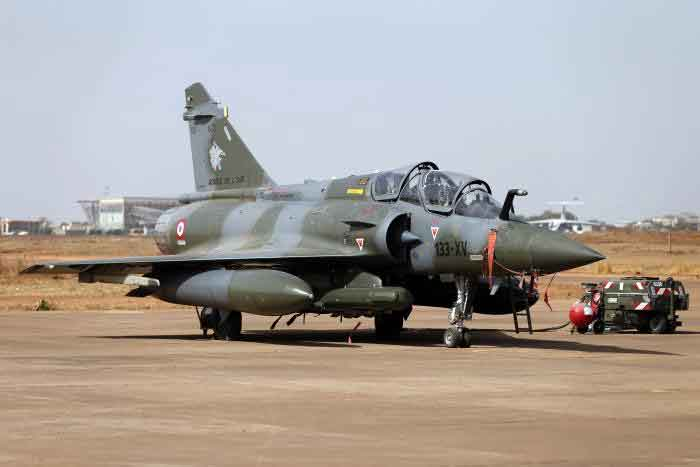
In a recent report, the United Nations Mission in Mali, known as MINUSMA, concluded that, on January 3, French warplanes had struck a crowd attending a wedding in the remote village of Bounti, killing 22 of the guests.
According to the findings, based on a thorough investigation and interviews with hundreds of eyewitnesses, 19 of the guests were unarmed civilians whose killing constitutes a war crime.
Neo-Imperialism and Indigenous People

“Suppose there are ten people in this room. Seven are starving, and one is winning medals, and two are doing OK. And I say, ‘Look at these seven people who are starving,’ and you say, ‘Oh, don’t be so negative, no, things are not so bad – look at the other three.’ Really?” Arundhati Roy.
Globalization of the economic system has affected the nearly four hundred million indigenous people of the world in the worst way.
Corporations cannot survive without an ever-increasing supply of oil, gas, minerals, fish, freshwater, arable lands, and require infra-structure-new roads, pipelines, dams, electricity grids, air and seaports. 1
The lands of the native people are the last resources, and have become prime targets of global corporations.
Out of an estimated five thousand ‘native’ societies on earth, a substantial number are in Central and South America, Southeast Asia, Africa and the northernmost regions of the world. They face grave threats everywhere from the machinations of WTO, GATT, TRIPS, WB and IMF.
Financial/Investment Liberalization demands unimpeded foreign capital investment, removal of controls on currency and speculation and foreign equity to increase to 100%. It also requires cuts in Social spending, trade/import liberalization, dismantling of tariffs/regulation to protect local products. A prime requirement is the guarantee of Property Rights of Corporations, which have to be treated as humans. Privatization of State Agencies and Assets, and sale of all assets to the private sector, currency devaluation, reduction of payroll, services, public investment and infra-structure are also mandatory. Removal of subsidies/price controls on basic food and agriculture for local needs and increased interest rates for credit are also demanded. (2)
Free trade is the core belief of all these neo-con institutions which require elimination of all taxes, domestic barriers, including environmental, health and labor laws.
Only second in importance in neo-con theology is privatization-transfer to corporate ownership of freshwater, forests, energy sources, genetic structures of plants and humans, water delivery, education, transport, health and sanitation, public broadcasting and welfare.
Deregulation is the third mantra-lift all controls on corporate behavior, responsibility, liability and accountability.
Structural adjustment, that the nations remodel their economies in return for loans, including social welfare and environmental policies to suit corporate growth is the whip that WB and IMF employ for compliance.
Financial liberalization leads to decapitalization of nations with volatile capital flow, loss of control over entire sectors of the economy to MNCs (Multinational Corporations)., and diminished enforcement of laws to promote people’s rights.
It is all to favor the elite to be able to own more land, exclude local investment, take away all profits and allow 100% foreign ownership of all resources and give them tax breaks.
The poor are rendered more wretched. Cuts in social spending reduce access to health, education and social services and raise illiteracy rates. Guaranteed property rights heightens conflicts between people’s traditional land rights and corporate claims. Privatization of state assets causes massive job losses as private owners shed jobs.
It also excludes the poor from education, health and social services. Currency devaluation intensifies pressure to export and reduce wages. Smaller government leads to massive layoffs as the government is the largest employer in LDCs. Small farmers are forced to sell land, become tenant farmers or move to city slums.
Corruption is vastly increased as Multinational Corporations (MNCs) bribe local officials to do their bidding.
Free movement of capital is removal of all restrictions on global investors to move capital, in and out of countries, despite destabilizing effects seen in Latin America, Russia and East Asia.
Export-oriented growth favors large-scale export industries to small-scale local farms, markets, artisans and businesses, replacing local economies with trade-oriented systems.
Advocates of globalization claim benefits would ‘trickle down’, “A rising tide will lift all the boats” (3).
Instead they have greatly increased the divide between the poor and the rich, diminished political and economic democracy, devastated the environment and accelerated climate change. The model only lifts yachts.
The model was designed for short term gains of a small number of corporations at the top.
Current battles are on the remaining fresh water, and the pollution of Mayan corn by genetically engineered varieties imported from the U.S.(4)
Eco-tourism has converted indigenous communities into cultural zoos. (5).
Occupation of Abstract Space:
Economic globalization is an outgrowth of the colonization that the people in the South have suffered from for five hundred years. They occupied physical space before. They still do (Iraq, Afghanistan, Gaza, Bosnia, Chechnya, Africa and other places), but the trend is to occupy abstract space through churches, schools and media which teach the Less Developed Countries (LDCs) to despise themselves. The new shape of slave labor is outsourcing, which hurts the South and North both. (6).
Globalization, the current incarnation of capitalism continues to regard all living beings, nature, and all life, as a commodity. Genetically engineered sheep like Tracy, enables them to secrete marketable drugs in their milk. Trade has to be liberated, so that highly subsidized wheat and canola oil can devastate local farmers in Asia.
Corporations grab not only the resources, but also knowledge about local plants-to privatize, and monopolize. They use paramilitary groups to deal with resistors. (7).
Sustainable development has come to mean sustainability of the global market economy. The countries that subsidize their products flood foreign markets.
When indigenous farmers do try to convert traditional farming to cash-crop, they are overwhelmed by products from Canada and the USA, so they are driven out of their hearth and home.
Corporations are allowed investment with 100% equity with no local partners and are free to remove people from their lands, leading to millions of displaced farmers in India alone, with hundreds of thousands of suicides since 1998 (8).
The most damaging aspect of international trade policies is that the market price of natural resources is determined by the corporate system, which does not take into account the environmental and social costs. Scientists have turned into accomplices by publishing data which bio-prospectors use.
Whole regions are declared ‘wild’ for exploitation. Natural Habitats are destroyed. WHO has estimated that 80% of the non industrial world depends upon traditional medicine. The sources are destroyed. (9).
World Trade Organization:
The essential agenda is to reduce the role of individual governments in all economic matters. It effectively functions as world government, passes laws, settles disputes in its own courts, and has major financial enforcement powers. It restricts people from influencing their own government. Many cultural, health and environmental standards are direct victims of WTO. Sub-federal governments are restricted from exercising their autonomy in food policy, taxation and resource management. (10).
The General Agreement on Tariffs and Trade (GATT) established in 1947 in Bretton woods, along with WB and IMF, set voluntary principles for free trade. They became compulsory with the creation of WTO. (11).
The articles, “Most Favored Nation” and “National Treatment” effectively restrict governments from stopping imports from countries on moral or ethical grounds; HR violations, Labor standards, environmental concerns, illicit trade or war. If they had been mandatory at the time, it would have been impossible to boycott South African apartheid.
They keep governments from favoring local industries and agriculture. Foreign businesses and banks may take over the economy of weak nations and may not protect over exploitation.
The article on Free Transit of Goods restricts government’s right to regulate trade at borders.
The article Qualitative Restrictions keep governments from imposing quotas and protecting local resources.
The article on General Exceptions makes governments offer proof if they want to protect certain trees, animals or human health; that such laws should not be overturned by WTO.
The net result is loss of sovereignty.
Agreement on Agriculture (AoA) eliminates tariffs, quotas, standards on quality of imports and increases competition from subsidized imports. (12).
Governments may not support domestic products.
Export subsidies not permitted though the US and Europe continue to do so in the guise of research grants and funds for advertising. (13).
WTO rules discriminate in favor of massive monocultural production (export oriented industrial agriculture), beef, exotic flowers, Soya, luxury vegetables, and bring enormous environmental problems. Large new infra-structure systems are required, new roads, canals pipelines and ports, which destroy habitat. (14).
Agreement on Sanitary and Phyto-Sanitary measures restricts governments from preventing entry of harmful or invasive species or diseases for food safety. They restrict the government’s ability to regulate import of transgenic products.
WTO vigorously enforces corporate rights; it does little to recognize people’s rights. Fishing communities in Coastal areas of India were replaced by massive foreign investor driven shrimp farms, which were permitted to dump shrimp everywhere.
Agreement on Trade-Related Aspects of Intellectual Property Rights (TRIPS), explicitly allows patenting plants, animals, microorganisms, but does not require patent applicants to declare the source of genetic material. (15).
Under its rules, biotech companies can privatize genetic resources and legally exercise exclusive rights over the material. This has had a major effect in India.
It does not even require patent holders to compensate or share benefits with the people.
Field scientists often use indigenous knowledge and file a patent claim as their ‘discovery’.
Examples include W.R Grace’s patenting of a pesticide derived from ‘neem’ a tree, villagers in India have used through history as a pesticide and medicine (16). A California scientist filed for a patent on the psychoactive plant hayahuasca, used on the Amazon for spiritual rituals. Other examples are quinoa and sangre de drago in the Americas, turmeric and bitter melon in India and kava in Pacific. (17).
General Agreement on Trade in Services (GATS) is an attempt at privatization of such services as water treatment and delivery, health care, broadcasting, welfare, insurance and banking. (18).
In 1999, Bolivia accepted a WB loan, which required that water in Cochabamba, the third largest city be privatized. Bechtel Corporation was granted ownership of pipes, pumps, purification and delivery equipment, and gathering and storage facilities. Users who made less than a $ 100.00 a month got water bills of $ 20.00 a month. Water was shut off for non-payment. Riots ensued, martial law was imposed, protesters shot dead, before the contract was cancelled (19).
Agreement on Investment would impose a requirement like the ones in NAFTA, that any loss in profits because of local or national rules be compensated by the government. (20). Rich nations are eager to establish the NAFTA right of foreign investors to sue national governments directly, if they enact any measures that reduce planned profit.
Bio-colonialism:
Through TRIPS corporations can lay monopoly claims to human genes and biodiversity. When genes become private property, they become alienable.
In 1984, Moore, a Seattle businessman sued the UCLA that while undergoing treatment for leukemia at the UCLA Medical Center, his doctor, without his consent, developed a cell line from his blood, which proved valuable in fighting cancer. In a landmark decision in 1990, California Supreme Court decided that patients do not have a “property right to the tissues removed from their body” (21). Under the decision for patenting DNA from individuals can be patented, with or without consent.
In 1993, the then secretary of labor Ron Brown filed a patent claim on the cell line of a Guanami woman from Panama, because some Guanami people carry the virus/antibody, which might be useful in AIDS and leukemia research (22).
In 2002, the Nuu-chah tribe in British Columbia found that samples for arthritis research taken in the 1980’s at the University of British Columbia were being used by Oxford University in England. Dr Ryk Ward, who had left BC in 1986 had taken about 900 samples without their consent (23).
In November 2000, an Australian biotech company, Autogen Ltd signed an agreement with the Kingdom of Tioga’s minister of health to secure exclusive rights to the entire gene pool of the people of Tonga. Because of HR group protests, the proposal was ultimately dropped (24).
In the Earth summit of 1992, in Rio de Janeiro, signatory parties agreed to the “Conservation of biological diversity…sustainable use…fair and equitable sharing of benefits…” (25).
An open ended working group on Access and Benefit sharing is to be negotiated. The focus is on promoting, rather than preventing, the commercialization of genetic resources.
In South Africa, the San people do not eat while hunting, and stave off hunger by chewing the stem of a cactus called Hoodia. In 1997, The South African council for Scientific and Industrial Research, secured a patent on the appetite-suppressing component called P 57, and licensed the development rights to Phytopharm, which sub-licensed the rights to Pfizer. Nobody bothered even to inform the San people. In fact Phytopharm claimed that the 100,000 San people were extinct (26).
In 2003, after a lot of condemnation, the CSIR offered a benefit-sharing arrangement to the San people (27).
GATT, TRIPS, WTO and Corporations:
During the GATT negotiations, the US forced its own patent system onto the world through WTO. US corporations drafted and lobbied for the creation of Trade Related Aspects of Intellectual Property Rights Agreement (TRIPS). Monsanto spokesman admitted “The industries and traders…played simultaneously the role of the patients, diagnosticians, and the prescribing physicians” (28).
Life Science Corporation established article 27.3 (b) to claim patents on genes, seeds, animals and plants. Ciba Geigy and Sandoz have joined to form Novartis, Hoecht with Rhone Poulenc to Aventis, (acquired by Sanofi-Synthelabo), Zeneca merged with Astra, Monsanto owns Cargill Seeds, DeKalb, Calgene, Agracetus, Delta and Pine land, and Asgrow. 80% of all GM seeds planted are ‘Monsanto’s’ intellectual property. Monsanto also owns broad species patents on cotton, mustard and Soya bean (29).
TRIPS laws permit the claim that seeds, plants, animals and human cell lines are “products of the mind” created by Monsanto and their kin.
Farmers are converted into “thieves”. Monsanto hired detectives to chase farmers, and sued Canadian farmer Percy Schmeiser, on whose field ‘Monsanto seeds’ had been flown over by the wind.
The US sued India in a dispute, and the WTO forced India to change its patent laws and grant exclusive rights to foreign corporations on the basis of foreign patents.
The US government granted patents for the anti-diabetic properties of karela, brinjal and jaman (bitter melon, eggplant, Indian plum) to two NRIs, Onkar S. Tomer and Kripanath Borah and a partner Peter Glonski, despite the fact that the medical use of Neem, haldi, pepper, harar, bahera, amla, mustard, basmati, ginger, castor, jaramla, and amaltas is well documented in authoritative treatises like “Wealth of India and “Compendium of Indian Medicinal Plants” and “Treatise on Indian Medicinal Plants” (30).
In the 2002 Convention on Biological Diversity, global agricultural and pharmaceutical corporations strongly fought for the seemingly altruistic concept that biodiversity is “common human heritage”, ought to be freely accessible, and not locked up by indigenous communities. But once they lay their hands on such resources, they move immediately to privatize, patent and monopolize and keep all financial rewards to themselves.(31).
The Amazon RainForest:
Bribes to local officials and politicians have enabled the WTO, WB and global corporate interests to build new roads, pipelines, dams and power lines deep into forests to exploit oil and mineral reserves and timber, and link them with global markets.
In March 2001, the Italian oil company AGIP Oil signed a contract with six Huaorani communities in Ecuador, offering to compensate them with 50 kilogram of rice and sugar, a bag of salt, 2 footballs, 15 plates and cups, 34 cans of tuna and sardines, some medicines, a radio, a battery and solar panel and $3,500.00 to build a school room, in return for building six oil wells on Huaorani lands (32).
In the case of the Coari-Urucu gas pipeline in Brazil, 7,000 workers and vendors settled around towns, threatening the livelihood of indigenous people (33).
HR abuses inflicted on local people over the paving of Manuas-Caracas road consisted of beating, torture and killing by Brazilian army (34). In the 1970’s and 1980’s, two thousand of the Waimiri-Atroari people disappeared, and they lost 80% of their land (35).
In the 1980’s, the Parakana people of Eastern Brazilian Amazon were forcibly resettled to make way for the Tucurui Hydroelectric scheme (36).
In the North Eastern Ecuador oil producing region, thirty years of Texaco Oil operations has left a toxic legacy, and high rates of cancer, skin rashes, sores, stomach and respiratory problems. Cancer rates are three times higher than the national average (37). In the Camisea region of Peru in the mid 1980’s, Shell Oil conducted exploration for oil and gas. That led to an influx of loggers and exposed the indigenous people to whooping cough, small pox and influenza. An estimated 50% of the population died (38).
The Belo Monte dam, which will be the third-largest such project in the world, has been strongly opposed by environmental campaigners and indigenous people who face being displaced. Environmental groups have warned that the dam could lead to the displacement of tens of thousands of people and threaten the survival of indigenous groups in the area.
Last year James Cameron, the film director, compared the plans to the plot of his box office hit Avatar, in which the Na’vi race fight to protect their planet from outside forces seeking to extract resources.
The Ecology Disaster:
Arctic Ice was once 5 ft thick, but in many places it has been reduced to 5-6 inches. (39).
Marshall Islands Glow: The Guinea Pigs of Marshall Islands:
Zohl de Ishtar, a University of Queensland, Australia professor, has written about the half century of US atomic testing in Bikini on the Marshall Islands in the Pacific to Star Wars missile testing on Kwajalein which forced removal of thousands of islanders to a nearly inhabitable island (40).The Island’s geographic isolation has given the US a mantle of secrecy to develop nuclear bombs, missile and space warfare technology. That has violated the health of the people.
From 1946 to 1958, the US detonated 66 nuclear bombs in Bikini and Enewetak atolls. In March 1946, all 167 residents of Bikini were relocated to the barren sandbar island of Rongerik. On June 30, 1946, the first post WW II nuclear bomb was detonated on Bikini atoll (41).
In July 1947, the Marshall Islands, along with other Micronesian nations, became the UN’s only Strategic Trust Territory under the US administration. The Trust obligated the US to “promote the development of the inhabitants of the trust territory towards self-government or independence…promote the economic advancement…development of fisheries, agriculture, industries, protect…land and resources’ ‘ (42).
In December 1947, the US government removed the people (43).
In March 1948, Bikinians were relocated to Kwajalein, and then to Killi with no protected lagoon/harbor which made fishing impossible (44).
On March 1, 1954, despite reports that the wind was blowing towards inhibited areas, the US detonated its first deliverable H bomb, 1000 times more powerful than the Hiroshima bomb, over Bikini. (45).
The US had removed its naval ships out of the area before the test, but took over 48 hours to evacuate the people, who by that time had started suffering from nausea, vomiting and rashes due to exposure to radioactivity. The US Atomic Energy Commission tried to cover up by declaring that “Unexpectedly exposed…there were no burns”. This declaration was belied by the publication on March 7, 1954 of a ‘secret’ medical study (46).
In December 1956, after 17 more nuclear/hydrogen bombs, the US offered the Enewetak people US $ 25,000 in cash and a $ 150,000 collective trust fund. The Bikinians were given $ 25,000 in cash and $300,000 in a trust fund, yielding 15.00 per person per year (47).
In July 1957, the US declared Rongelap island safe for habitation “The habitation of these people on the islands will afford most valuable ecological radiation data on human beings”-Department of Energy’s Brookhaven National Laboratory, internal report (48).
In May 1958, another 32 tests began. According to Rev B. David Williams and The Foundation of the Peoples of South Pacific…”In 1958, the rate of still birth… and miscarriages…rose to more than twice…” (49).
In 1973, Brookhaven National Laboratory reported that 69% of children under ten years of age at the time of the tests had developed thyroid problems.
In July 1976, the US Congress allowed $ 20 million for nuclear clean up. By May 1977, 100,000 cubic yards of topsoil had been scraped off, and dumped in the bomb crater on Runit Island, and sealed with cement (50).
In December 1984, the US National Radiological Survey reported that almost half the Marshall Islands had been contaminated by the US nuclear testing program (51).
In January 1994, US Congressman George Miller wrote to Bill Clinton…they had been used as “guinea pigs” by the US military (52).
Wars for Global Water:
Global consumption of water is doubling every twenty years, twice as fast as the human population. Per the UN, by the year 2025, two thirds of the humans will live under conditions of serious water shortage, and one third under absolute water scarcity and, “The next World war will be about water” (53).
The two biggest consumers of freshwater are industrial agriculture and ‘Chip’ manufacturers. Drinking water is a distant third.
Water privatization is already a $ 400 billion business; dominated by the likes of Shell oil and Bechtel, it is worth 100 billion in the USA, (54).
Imperialists routinely took the most fertile and water-rich areas. Israel has taken over the water sources in the West Bank. (55). Its citizens have automatic sprinklers for their lawns, while Palestinians have scarce drinking water.
Sustainable agriculture using a fraction of what industrial agriculture does, is being dismantled.
Even today the trend continues. Masai of East Africa, and Guarani and Kaiowa of Brazil were forced to leave their land in January 2002 (56). In February 2002, Gana and GWI bush families in the Central Kalahari game reserve of Botswana had their water supplies cut off by the government (57).
An estimated 5 million persons, most of them children, die every year due to use of polluted water (58).
In India, people have successfully closed down several Coca-Cola bottling plants. During 2004, New Delhi had the first People’s Water Forum. Venezuela codified several years ago that water cannot be privatized, and Uruguay followed suit in 2004.
Similar, though less successful struggles are going on in other parts of the world like South Africa, Canada, Argentina, Philippines, Trinidad, Ghana, Tanzania and the USA, in Atlanta, New Orleans and Stockton CA.
Mayan corn genetically polluted:
Mexico’s corn gene pool is 5,000 years old and includes thousands of varieties and plant relatives specific to each region.
Detection of genetically engineered corn in Southern Mexico was a great shock. (59). Most researchers suspect dumping in Mexico of 5 million tons of US maize contained the material
Nigeria Despoiled by Oil Spills:
The massive 1970 oil spill in the Ogoni village Ebubu killed many. Shell oil erected a wall around the site, and government troops sealed off access (60).
With the connivance of Nigerian regimes, military and civilian, which have murderously suppressed their own people, the Royal Dutch Oil Co has waged an ecological and economic war against the people of Niger Delta for six decades. (61).
Oil production, gas flaring (gas released in air; in Texas, it is compressed into liquid), spillage, construction of canals and waste dumping have already brought Niger Delta to near ecological collapse. (62). They employ their own police, import their own arms and ammunition, and has admitted bribing the Nigerian military.
The Philippines ‘Mining Disaster’ Act of 1955.
Under pressure of the Asian Development Bank, the government adopted the Act, allowing massive influx of foreign mining corporations, which can lease the land for 75 years, keep 100 % control and may repatriate 100 % of their profits. (63).
Published on Friday, January 28, 2011 by The Telegraph/UK****
Ibama, the Brazilian environment agency, said on its website that it has approved the clearing of 588 acres (238 hectares) of forest at the site where the dam will be built in the state of Para.
It also said that Norte Energia, the consortium that won the bidding to construct the dam, can begin building roads to reach the remote site on the Xingu River, a tributary to the Amazon.
Contracts for the dam – which the government expects to cost nearly £ 10 billion – were finally signed last August after decades of disputes about plans for a dam in the area and a series of court injunctions.
But several potential legal hurdles remain, with licences still to be granted for the actual building of the plant, which the government wants to see completed by 2015.
The 3.7 mile wide dam will lead to around 190 square miles of land being flooded.
Environmental groups have warned that this could displace tens of thousands of people and threaten the survival of indigenous groups in the area.
But Brazil’s government has been determined to press ahead with Belo Monte, which is crucial to efforts to keep up with rising demand for energy as the country’s rapid economic growth continues. Ministers have also defended the scheme as a source of clean and renewable energy and Edison Lobao, the Energy Minister, has referred to it as “the jewel in the crown.”
« On est libre de penser mais pas de manger » : Atbara, berceau de la révolution au Soudan, entre espoir et amertume
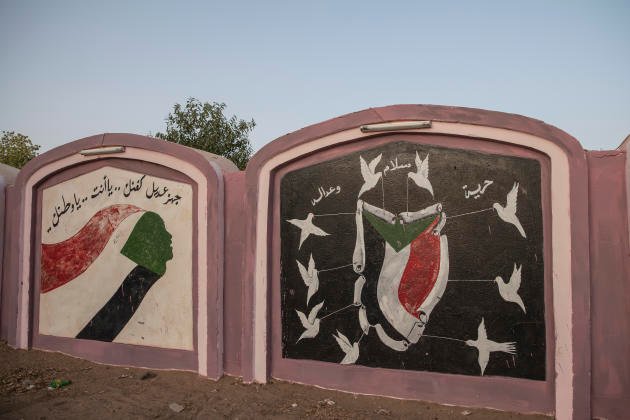
Deux ans après la chute d’Omar al-Bachir, un sentiment d’inachevé gagne la capitale du rail, où les effets de la crise économique rongent le quotidien des habitants.
La salle d’audience est plongée dans l’ombre et les ventilateurs sont coupés faute d’électricité. Mais ce mercredi 31 mars, le tribunal d’Atbara, à 300 km au nord de Khartoum, fait salle comble pour l’ouverture d’une série de procès impliquant des membres du National Intelligence and Security Service (NISS), les services de renseignement et de sécurité du régime d’Omar al-Bachir, renversé le 11 avril 2019 par l’armée soudanaise sous la pression de la rue.
La séance s’ouvre sur le cas d’Issam Ali Hussein. Le 21 décembre 2018, cet ouvrier de 27 ans était tué en pleine rue d’une balle dans la tête, tandis qu’une foule de protestataires déferlait à travers Atbara. Au total, seize hommes de main et officiers du régime militaro-islamiste sont accusés du meurtre de cinq manifestants tombés lors des premiers jours de la révolte dans cette petite ville des bords du Nil.
Le 17 décembre 2018, les habitants d’Atbara s’étaient soulevés contre le triplement du prix du pain après la décision du gouvernement d’Omar al-Bachir d’annuler les subventions sur le blé. Un électrochoc qui a poussé les travailleurs journaliers, les étudiants de l’université ou des établissements techniques de la ville, les vendeurs ambulants ou les artisans mineurs à défier comme un seul homme les forces de sécurité. « Toute l’exaspération s’est concentrée sur le symbole du pouvoir à Atbara, l’antenne locale du Congrès national [le parti de M. Bachir], qui a été mise à sac et incendiée le 19 décembre », rappelle Magdi el-Gizouli, chercheur au Rift Valley Institute. Une étincelle qui s’est rapidement propagée au reste du pays.
Dans l’histoire du Soudan, Atbara tient une place particulière. Haut lieu du chemin de fer soudanais né sous la colonisation anglo-égyptienne, « ses usines ont attiré des milliers de travailleurs issus des régions marginalisées, des paysans sans terre en quête d’un salaire qui ont formé l’avant-garde de la classe ouvrière soudanaise », poursuit Magdi el-Gizouli. Bastion des premiers syndicats et du Parti communiste, Atbara est devenue au fil des ans le berceau de la contestation au Soudan, se rebellant tour à tour contre les trois dictateurs qui ont dirigé le pays depuis son indépendance, en 1956.
« Simulacre de justice »
Drapée d’un voile pourpre, la procureure présente depuis son pupitre des photos prouvant l’implication des forces de sécurité dans la répression des manifestations « pacifiques », insiste-t-elle, qui se sont déroulées après la prière du vendredi à Atbara. Devant le tribunal, une cinquantaine de manifestants sont tenus à distance par un cordon de police. Issus des comités de résistance d’Atbara, ces jeunes sont venus soutenir le combat des familles des « martyrs ».
« Maintenant, chaque personne dépositaire de l’ordre public devra réfléchir à deux fois avant de tirer sur un manifestant désarmé », lâche Saïd Ali Ahmad, arrêté et jeté en prison pendant trois jours en décembre 2018. Du haut de ses 24 ans, Saïd a l’impression qu’un peu de justice se concrétise enfin au Soudan. « C’est la première fois qu’une telle action judiciaire a lieu hors de Khartoum et la première fois que je vois des gradés des services de sécurité qui doivent rendre des comptes », se réjouit-il.
Mais le chemin est encore long. « Les procès en cours à Atbara sont symboliques mais visent seulement les échelons les plus bas du système Bachir, déplore Magdi el-Gizouli. Ils mettent en cause les pions sans inquiéter les stratèges. » Au moins 177 personnes ont été tuées dans la répression du mouvement, selon Amnesty International, dont une centaine lors de la dispersion brutale du sit-in de Khartoum, le 3 juin 2019, devant le quartier général de l’armée.
« Tout le monde connaît les commanditaires de ce massacre intervenu après la chute de Bachir. Le principal accusé, c’est Hemetti [Mohamed Hamdan Daglo, commandant des Forces de soutien rapide et vice-président du Conseil souverain], mais c’est le numéro deux de l’Etat. Le gouvernement multiplie les commissions d’enquête mais c’est un moyen de gagner du temps. C’est un simulacre de justice », accuse le chercheur.
Pour Saïd Ali Ahmad, le Soudan connaît des transformations incontestables : « Il y a deux ans, si on s’était rassemblés comme aujourd’hui, des pick-up auraient débarqué, les hommes du NISS nous auraient frappés. » Il dit soutenir les autorités de transition, issues d’un pacte entre l’armée et une coalition de partis civils. « Ce n’est pas possible de réparer la situation du jour au lendemain. On a besoin de temps », conclut-il, rappelant que des élections doivent se tenir à la fin de la période de transition, repoussée jusqu’en 2024.
Un pays en faillite
Tous ici ne partagent pas son optimisme. A Atbara comme dans les autres villes du pays, les effets de la crise économique rongent le quotidien des habitants. Après la chute de Bachir, le gouvernement militaro-civil a hérité d’un pays en faillite, dont la situation s’est encore aggravée sous l’effet de la pandémie de Covid-19. Autrefois fierté nationale, la capitale du rail fait aujourd’hui grise mine. L’industrie ferroviaire est en berne, les usines de ciment tournent au ralenti, le taux de chômage galope, comme l’inflation. La ruée vers l’or amorcée dans les années 2010 et les investissements agricoles du Golfe n’ont pas tenu leurs promesses.
« On a gagné en liberté d’expression, de pensée, de réunion. Mais de quelle liberté parle-t-on quand on ne peut pas accéder aux services de base ? Vous êtes libres de penser mais pas de manger », se plaint Azza Salah, membre d’un comité de résistance d’Atbara. Ces groupes de jeunes révolutionnaires ont été un maillon essentiel dans l’organisation du soulèvement. Aujourd’hui, ils sont à l’origine d’une myriade de petites initiatives pour tenter d’alléger le poids de la crise. Ils organisent des marchés coopératifs où les produits sont vendus à des prix raisonnables, s’échinent à assurer l’approvisionnement des habitants en eau, luttent contre les pénuries de gaz ou de pain.
Suivant les recommandations du Fonds monétaire international (FMI), le gouvernement a adopté une série de réformes pour tenter de réintégrer la scène économique internationale. Le Soudan a d’ailleurs été rayé de la liste américaine des pays soutenant le terrorisme et, grâce à d’importants prêts américains, il a pu commencer à éponger sa dette auprès des bailleurs de fonds internationaux. Mais la cure d’austérité incarnée par la fin des subventions sur la farine ou le carburant passe mal. L’adoption d’un taux de change flottant, en février, a de fortes répercussions sur les ménages modestes ; et les coupures d’électricité, les pénuries d’essence ou de médicaments sont incessantes.
Pour Badreddin Omar, un militant politique, ce sont les militaires au pouvoir qui « pourrissent la situation ». L’homme de 39 ans était parmi ceux qui avaient embarqué dans un train, le 23 avril 2019, en direction du sit-in de Khartoum, pour donner un second souffle au mouvement. « Après la chute de Bachir, nous avions une seule demande : un gouvernement 100 % civil. La signature d’un accord avec les militaires fut une désillusion. Le rôle de l’armée c’est de protéger les frontières, pas d’entrer en politique. »
La situation économique exsangue nourrit chez certains un sentiment d’amertume confinant à la nostalgie. De bon matin, sur le quai de la gare d’Atbara, des familles s’empressent de monter dans le seul train de la journée desservant la capitale. Au moment de hisser ses valises dans le wagon, Doha Ibrahim laisse paraître son mécontentement. « C’est bientôt le ramadan, je ne vois pas comment on va pouvoir faire manger tout le monde. Toute cette révolution pour quoi ? Au moins sous Bachir on avait du pain », lâche-t-elle, ses deux enfants sous le bras. Depuis quelques mois, à nouveau, des manifestations éclatent régulièrement, pour protester cette fois contre la cherté de la vie.
L’insécurité alimentaire au Sahel devrait augmenter durant l’été

L’insécurité alimentaire atteint un nouveau pic, a relevé le Réseau de prévention des crises alimentaires (RPCA) du Sahel. C’est un constat une nouvelle fois inquiétant pour la région.
Lors d’une réunion virtuelle qui s’est terminée vendredi 9 avril, le RPCA fait le point sur la situation de sécurité alimentaire dans la région du Sahel et se penche sur les prévisions pour la période « soudure » de l’été.
19,6 millions de personnes actuellement au Sahel et en Afrique de l’Ouest ne mangent pas à leur faim, selon les experts de la région, qui prévoient une aggravation de cette crise alimentaire entre deux récoltes dans les prochains mois.
Les analystes du Réseau de prévention des crises alimentaires s’attendent à ce que 27 millions de personnes se retrouvent en besoin d’assistance immédiate, soit plus de 9 % de la population des 14 pays concernés et la pandémie de Covid-19 a aggravé la situation.
Insécurité et instabilité
Ces crises récurrentes résultent de plusieurs facteurs, avec l’insécurité, l’instabilité et les conflits, comme première cause. Mais il y a d’autres défis dans la région, comme les problèmes fonciers, les conflits entre éleveurs et agriculteurs provoqués par la transhumance ou encore le changement climatique.
Devant la dégradation de la sécurité alimentaire au fil des années, certains responsables appellent à voir plus loin que la réponse immédiate apportée aux populations sous forme d’aide humanitaire, qui devrait être « une solution de dernier recours ».
Éthiopie: les tensions entre Amhara et Oromo ont fait 300 morts durant le mois de mars
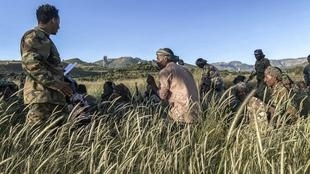
À deux mois des élections législatives et municipales en Éthiopie, les tensions ne faiblissent pas. Au mois de mars, des affrontements entre Amhara et Oromo, les deux principaux groupes ethniques du pays, ont fait plus de 300 morts, selon les chiffres d’un responsable fédéral.
Ces violences ont touché deux zones de la région Amhara North Shewa et le nord du pays. C’est l’agression d’un imam devant une mosquée dans la zone spéciale d’Oromo qui aurait déclenché ces affrontements inter communautaires, d’après un responsable local, Endale Haile, le médiateur en chef de l’Éthiopie.
Des affrontements aggravés par l’instabilité politique explique Eloi Ficquet, chercheur à l’école des hautes études en sciences sociales : « Ce qu’on observe c’est une forme de désagrégation de l’autorité avec un peu partout dans le pays un regain de tension, dans un contexte de préparation des élections qui auraient dû avoir lieu l’an dernier, qui ont été reportées, avec un pouvoir dont on se demande s’il est impuissant à réguler ces tensions. Du coup ce sont les passions, les jalousies locales, les clivages religieux, culturels qui s’expriment de la façon la plus colérique alors que c’est une société où les dispositifs de résolution de conflit, de négociation, de rééquilibrage des pouvoirs existent, mais actuellement ils semblent assez défaillants. »
Djibouti : 34 migrants morts dans le chavirage d’une embarcation (OIM)

Trente-quatre migrants sont morts après le chavirage de leur embarcation au large de Djibouti, a annoncé lundi le responsable régional de l’Organisation internationale pour les migrations (OIM). “Les migrants étaient transportés par des passeurs”, a écrit sur Twitter Mohammed Abdiker, directeur de l’OIM pour l’Est et la Corne de l’Afrique, en déplorant la “deuxième tragédie de ce genre en un peu plus d’un mois” après la mort de 20 personnes dans ce même détroit de Bab el-Mandeb le 4 mars.
De nombreux enfants parmi les victimes
“De nombreux enfants” figurent parmi les corps retrouvés, a précisé à l’AFP une source au sein de l’OIM, indiquant que le chavirage “s’est passé vers 4 heures du matin, au nord d’Obock”, ville de la côte djiboutienne. “Il s’agit d’un bateau qui a quitté le Yemen avec environ 60 migrants à bord, selon les survivants”, a ajouté cette source. “Le bateau aurait été pourchassé par les garde-côtes et il y avait aussi, apparemment, de grosses vagues, le temps était mauvais”, a-t-elle expliqué, soulignant que les survivants étaient “pris en charge par l’OIM et les autorités” djiboutiennes.
Des morts à répétition
Le détroit de Bab el-Mandeb, qui sépare Djibouti du Yémen, est un lieu de fort trafic de migrants et de réfugiés, où se croisent à la fois des Yéménites fuyant la guerre et des Africains allant tenter leur chance dans la péninsule arabique. En mars, une vingtaine de migrants en provenance de Djibouti étaient morts noyés après que des passeurs avaient jeté à la mer des dizaines de personnes présentes sur une embarcation en surcharge comptant 200 personnes. Deux incidents similaires avaient été rapportés au mois d’octobre, causant la mort d’au moins 50 migrants.
“Appréhender et poursuivre les trafiquants de personnes et les passeurs qui exploitent les vulnérabilités des migrants doit devenir une priorité”, a affirmé Mohammed Abdiker dans son tweet, déplorant “trop de vies perdues inutilement”.

